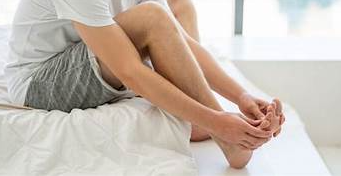Before considering surgery, there are over-the-counter options you can use and incorporate to help manage your bunion and reduce discomfort.
Bunions, which are characterized by a bony bump on the side of the foot, can significantly impact daily activities, causing pain, swelling, and discomfort. While bunions are often hereditary and caused by an abnormal foot structure, there are several at-home treatments that can help alleviate symptoms before considering more invasive options like surgery.
According to Dr. Anne Sharkey, a board-certified podiatrist, bunions occur when the bones in the foot shift out of place, causing the big toe to lean toward the smaller toes, leading to the bony bump. In severe cases, the second toe may even overlap the big toe.
To manage bunions at home, podiatrists recommend various treatments and over-the-counter options. These include using bunion pads, which can help reduce friction and pressure, as well as wearing properly fitted shoes that provide ample space for the toes. Foot stretches and strengthening exercises can also be beneficial to maintain flexibility and reduce discomfort.
For those seeking more targeted relief, custom orthotics or over-the-counter arch supports can help redistribute pressure on the feet, potentially easing pain. Some patients also find relief from using ice packs to reduce swelling and inflammation, particularly after prolonged walking or standing.
When shopping for bunion treatments, it’s important to focus on options that align with the specific needs of your feet, whether it’s to relieve pain, protect the bunion from further irritation, or correct foot alignment.
Although bunions often require surgery for complete correction in advanced cases, these at-home methods can significantly reduce discomfort and may prevent the condition from worsening, allowing individuals to maintain a better quality of life without immediate surgical intervention.

